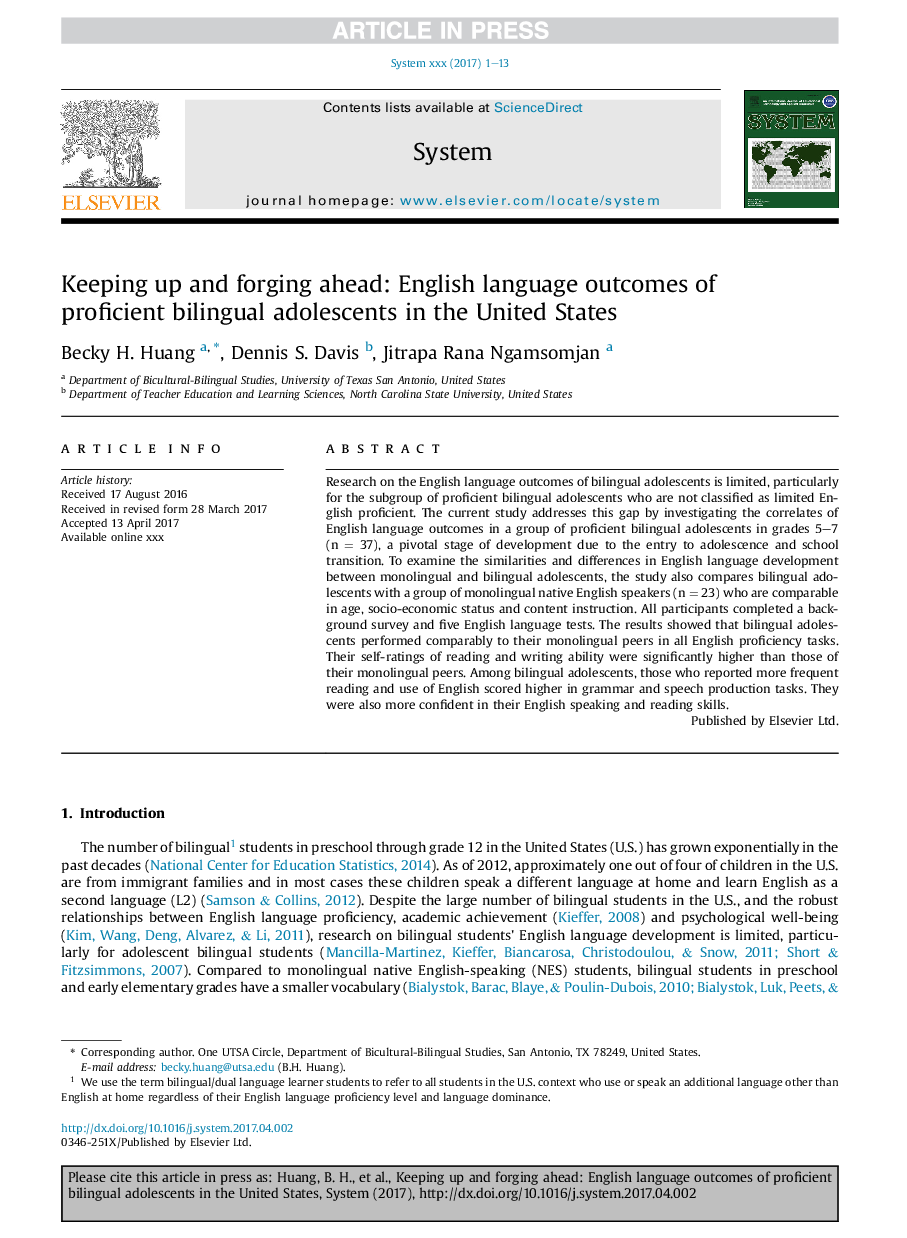| Article ID | Journal | Published Year | Pages | File Type |
|---|---|---|---|---|
| 4941387 | System | 2017 | 13 Pages |
Abstract
Research on the English language outcomes of bilingual adolescents is limited, particularly for the subgroup of proficient bilingual adolescents who are not classified as limited English proficient. The current study addresses this gap by investigating the correlates of English language outcomes in a group of proficient bilingual adolescents in grades 5-7 (n = 37), a pivotal stage of development due to the entry to adolescence and school transition. To examine the similarities and differences in English language development between monolingual and bilingual adolescents, the study also compares bilingual adolescents with a group of monolingual native English speakers (n = 23) who are comparable in age, socio-economic status and content instruction. All participants completed a background survey and five English language tests. The results showed that bilingual adolescents performed comparably to their monolingual peers in all English proficiency tasks. Their self-ratings of reading and writing ability were significantly higher than those of their monolingual peers. Among bilingual adolescents, those who reported more frequent reading and use of English scored higher in grammar and speech production tasks. They were also more confident in their English speaking and reading skills.
Related Topics
Social Sciences and Humanities
Arts and Humanities
Language and Linguistics
Authors
Becky H. Huang, Dennis S. Davis, Jitrapa Rana Ngamsomjan,
